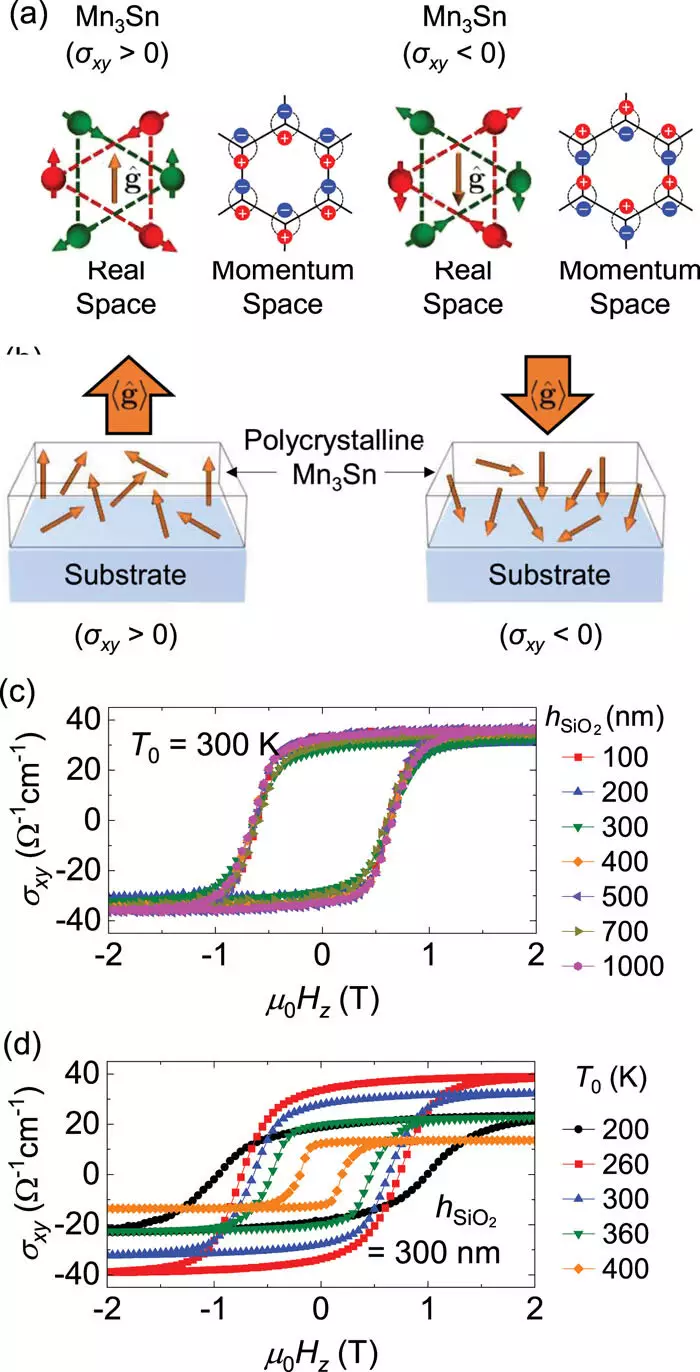In the ever-evolving realm of electronics, spintronics stands out as a promising frontier, harnessing the unique properties of electron spin instead of just electrical charge. This innovative approach holds the potential to revolutionize computing, not only by enhancing speed akin to traditional electronics but also by significantly reducing energy consumption. However, as researchers strive to refine spintronic devices, a crucial aspect remains shrouded in complexity: the impact of thermal effects on device operation. Recent advancements led by researchers from the University of Illinois Urbana-Champaign shed light on this enigmatic relationship, directly measuring heating effects and paving the way for more efficient spintronic materials.
The core principle behind spintronics relies on manipulating electron spin to modify magnetization through electric currents. This interplay between current and magnetism has two primary influences: the electromagnetic interaction with current and the thermal effects resulting from heating during operation. Axel Hoffmann, the project’s lead and an esteemed professor in materials science and engineering, emphasizes the necessity of grasping these underlying dynamics. Understanding whether the dominant factor in device functionality is the current or the heat induced by it could not only expedite device performance but also inform material selection for enhanced efficiency.
The implications of this understanding are vast; if the spin change is primarily driven by electric current, researchers can focus on speeding up device operation. Conversely, if thermal effects dominate, the challenges of thermal management come into play, which could inherently limit operational speed and efficiency. Thus, discerning the intricacies of these interactions is critical for the successful development of advanced spintronic technologies.
Despite previous efforts to investigate the consequences of heat in spintronic devices, researchers faced significant obstacles primarily due to the limitations in measuring thermal effects in micro-scale devices. Myoung-Woo Yoo, a postdoctoral researcher in Hoffmann’s team, introduced a groundbreaking experimental approach that provides a direct evaluation of heating in spintronic systems. By leveraging different thermal conductivities of silicon dioxide substrates, the team was able to deduce thermal effects from variations in device heating in response to applied electric current.
By using antiferromagnetic samples on substrates of varying thicknesses, the researchers observed that as substrate thickness increased, the substrate’s ability to conduct heat diminished, resulting in higher temperatures in the sample at the same current levels. This observation enabled a nuanced understanding of whether heating substantially influences the spin behavior in antiferromagnetic materials, thereby illuminating its role in device performance.
The investigations centered on the antiferromagnet Mn3Sn revealed that heating significantly influences the spin behavior of the device. This discovery is pivotal as it not only validates concerns about thermal effects but also frames a systematic methodology for evaluating various antiferromagnetic materials employed in spintronic applications. Researchers can now compare how differing heating dynamics affect spin strategies across a spectrum of materials, enabling them to identify candidates with minimal temperature-induced disruptions.
Furthermore, this methodology is adaptable and could easily be implemented in assessing standard electronic materials and systems. Such versatility broadens the potential applications of this research, making it an invaluable asset in the quest for more efficient electronic and spintronic devices.
As the investigation into the effects of heating on spintronic devices continues, the findings serve as a foundation for future research. By enhancing our understanding of the interplay between thermal and electromagnetic factors, engineering more efficient spintronic devices becomes increasingly feasible. Not only would these advancements provide significant contributions to energy efficiency, but they would also pave the way for rapid information processing capabilities, merging the benefits of both spintronics and traditional electronics.
With ongoing innovation within the field and methodologies now established to evaluate and compare materials, the future appears bright for spintronics. The ability to develop devices that can simultaneously achieve high speeds and low energy consumption positions spintronics as a transformative technology at the forefront of next-generation computing. As researchers continue to push the boundaries of what is possible, the quest to fully harness the power of spintronics is only just beginning, promising exciting developments on the horizon.

